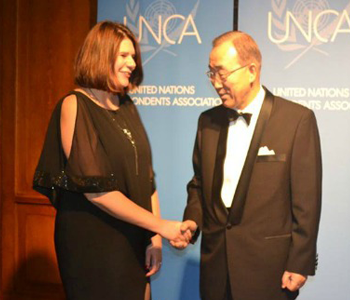
by Melanie Oda (Japan) | Oct 16, 2014 | 2014, Awareness, Being Thankful, Child Care, Childhood, Cultural Differences, Culture, Expat Life, Eye on Culture, Family, Health, Hospital, International, Japan, Kids, Life Balance, Life Lesson, Living Abroad, Milestones, Motherhood, Parenting, World Motherhood, Younger Children
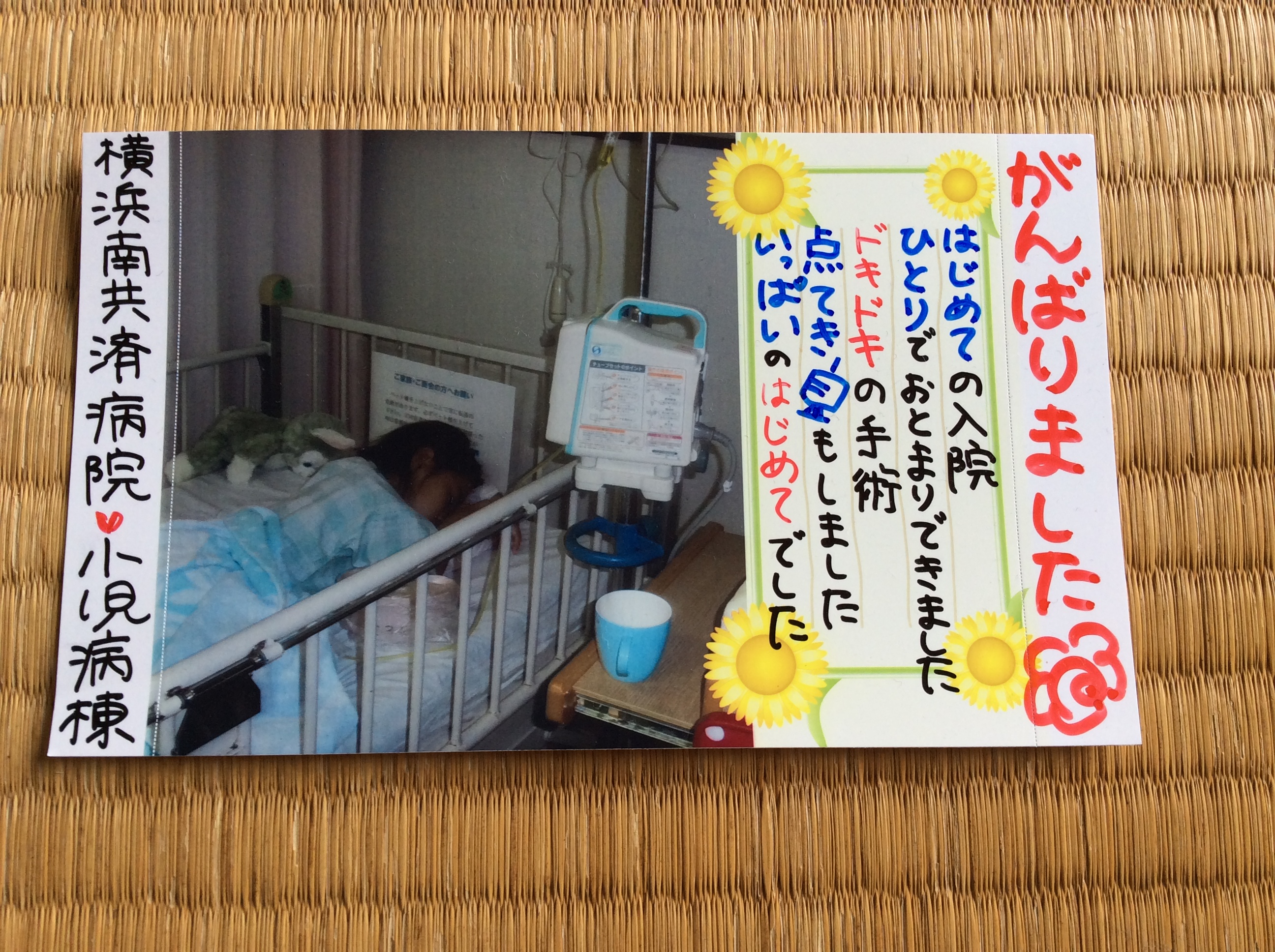 My 6 year-old daughter had her tonsils and adenoids out over summer vacation. She had been diagnosed with sleep apnea several months earlier and since nothing else was helping, finally I reluctantly agreed to the surgery.
My 6 year-old daughter had her tonsils and adenoids out over summer vacation. She had been diagnosed with sleep apnea several months earlier and since nothing else was helping, finally I reluctantly agreed to the surgery.
I was reluctant because hospital “culture” in Japan is very different from the US, where I am from, and because I knew I would be up against another cultural wall in regards to care for my older child.
This surgery, that requires a one-night stay in the hospital in either the US or UK (according to some quick research on my part,) here in Japan means seven nights in the hospital.
Since hospital rooms are shared, parents are not allowed to stay over night for any except the youngest of patients. Parents are expected to provide clean laundry and cutlery for the patient every day.
The children’s ward had a strict daily schedule, with times when they we’re confined to their beds (which literally had bars like a prison cell,) and times when, if they were well enough, they were allowed to use the playroom.
But absolutely under no circumstances whatever could they leave the children’s ward. And visitors under the age of 15 were not allowed in the ward.
This was a conundrum for me. I have a 9 year old son, who was on summer vacation at the time, and a husband who works 12 hour days, on a good day.
Hospital culture in Japan is strangely at odds with the wider culture in general. A high percentage of children co-sleep with their parents well into their elementary years. That is the cultural norm.
However, the hospital where my daughter had surgery, would not allow parents to spend the night with children over 2 years old.
This particular hospital allows parents of small children to stay until they fall asleep, but for my daughter, that may actually have been worse. Come lights out at 8pm, there was more crying in the children’s ward than from the nursery down the hall.
I had another child waiting at his friend’s house or at Baba’s (grandmother’s) house for me to come home, after all. My husband tried to get home from work at a decent hour, but I think he made it by 7pm once.
The day after the surgery, when my daughter was still feeling ill from the effects of the anesthesia and started bleeding from her nose, I was very grateful that she was in the hospital where I could have a professional attend to any concerns with the push of a nurse-call button.
Around Day 3, though, I could feel myself beginning to fall apart, fiber by fiber. The stress and plain old-fashioned exhaustion were starting to get to me.
My son at home was starting to feel the effects of being shuffled from place to place numerous times a day. My daughter wasn’t sleeping well and wanted to come home. I begged the doctor to discharge her a bit early, even a few hours would be great. His response was that the other child in the same room who’d had the same surgery on the same day was not recovering as well, and it would be upsetting for her if mine left earlier.
Excuse me, what? I thought, blinking several times, sure I had misheard. But I hadn’t.
On the day she was finally discharged, the nurses and staff presented her with a postcard, complete with a photo of her post-op, “to remember them by.” My first instinct was to burn it. Who would want to remember this? But I kept it, an ironic little reminder of the Japanese tendency to have “entrance” and “exit” ceremonies for everything.
I was reminded of a speech the principal of a junior high gave to the student body to announce that I was leaving: “People enter our lives, and at some point we must be parted. We should cherish each of these events.” Perhaps one day my daughter will value the card.
For now, she gets angry every time she sees it. The poor little girl has been waking up at night just “making sure I’m at home” for the past several weeks.
But now I look at the card and I feel profoundly thankful that my kids are, for the most part, healthy and happy. I don’t know how parents, who have to juggle (and it is a juggling with knives-type event, not harmless bean bags) a child’s hospitalization—along with the mundane tasks of everyday life that just keep coming, even when we are least able to deal with them—do it.
I say a little prayer for you every night, moms I do not know, and wish you strength and patience and space to breathe.
Has your child ever been hospitalized? What was it like for you, as a parent?
This is an original post to World Moms Blog from our mother of two in Japan, Melanie Oda.
The image used in this post is credited to the author.
If you ask Melanie Oda where she is from, she will answer "Georgia." (Unless you ask her in Japanese. Then she will say "America.") It sounds nice, and it's a one-word answer, which is what most people expect. The truth is more complex. She moved around several small towns in the south growing up. Such is life when your father is a Southern Baptist preacher of the hellfire and brimstone variety.
She came to Japan in 2000 as an assistant language teacher, and has never managed to leave. She currently resides in Yokohama, on the outskirts of Tokyo (but please don't tell anyone she described it that way! Citizens of Yokohama have a lot of pride). No one is more surprised to find her here, married to a Japanese man and with two bilingual children (aged four and seven), than herself. And possibly her mother.
You can read more about her misadventures in Asia on her blog, HamakkoMommy.
More Posts
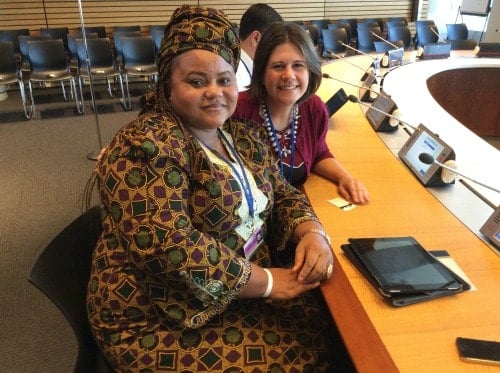
by Jennifer Burden | Oct 14, 2014 | 2014, Social Good, World Bank, World Voice
In the U.S., I find myself sometimes avoiding conflict in social situations. My kids…well, not so much…
“You can’t take that, it’s mine!!!” Or…
“She is writing on the kitchen table!”, while my girls battle for a crayon. Or…
“If you knock over my blocks, I’m telling!”, while just seconds later, my little one knocks the blocks with a cheeky grin. Or…
This is the reality now with a 7 and 3 year old, but I’m predicting that when they’re teenagers that they will rebel in the same way I did. Fight with their parents for a later curfew. Disagree with their mom because they want to wear a strapless dress to the eighth grade dance. Insist that they’re dating whoever they want. I hope their outspoken fire to challenge society will grow into and beyond their teenage years. I didn’t say that I am prepared for it, but I can accept that it is coming…I think.
But, as adults, it seems many of us tend to harden and lose that fire over time. The fire that ignited our teenage passions to think in a different way. The fire that kept us learning to support our own stance, for what is right. Going with the flow just feels more comfortable sometimes, especially when big odds are not at stake.
But, at the World Bank and IMF Civil Society meetings last week, big odds — which impact the lives of the world’s people and often the most vulnerable among us — were at stake. I witnessed change-makers taking a stand for the greater good. Here are some people who are carving out the new, more responsible way forward for the World Bank, IMF and beyond…
Jessica Evans of the Human Rights Watch challenged World Bank officials on incorporating human rights into new banking safeguards. She said that in the past the World Bank didn’t touch corruption because the institution wasn’t supposed to engage in politics according to its policy of the past, but now fighting corruption is fair game and a larger part of the World Bank’s mission. She pointed out this ability for the bank to change in a positive way on corruption, but its failure to do the same considering human rights.
She (Jessica Evans of the Human Rights Watch) claimed that human rights should not fall into the ‘political’ category. They are a necessity for responsible lending practices and should be incorporated into the current safeguards as they are being rewritten now, not as an afterthought a year later when they will be completed.
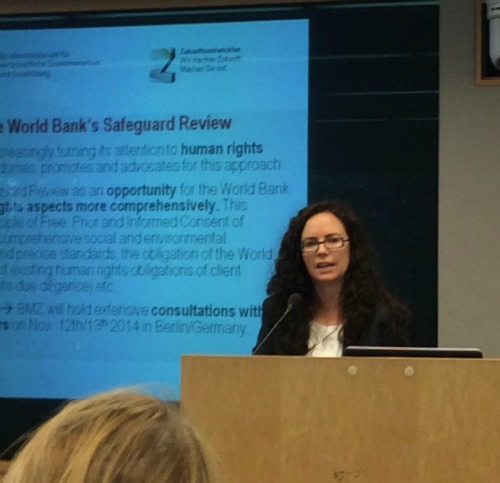
Jessica Evans of the Human Rights Watch speaks about the importance of human rights on a World Bank Civil Society Meeting in Washington, DC. October 7th, 2014.
To my surprise, I also had the chance to reconnect with a fellow Villanova University alum, Joseph Robertson, now Strategic Director of the Citizens’ Climate Lobby. He questioned Dr. Kim, President of the World Bank, and Mme. Lagarde, President of the IMF, on carbon pricing during the Civil Society Town Hall. Joe is championing a coalition called Pathway to Paris, which is seeking to mount a global coalition effort “to secure an agreement to motivate carbon pricing country by country.”
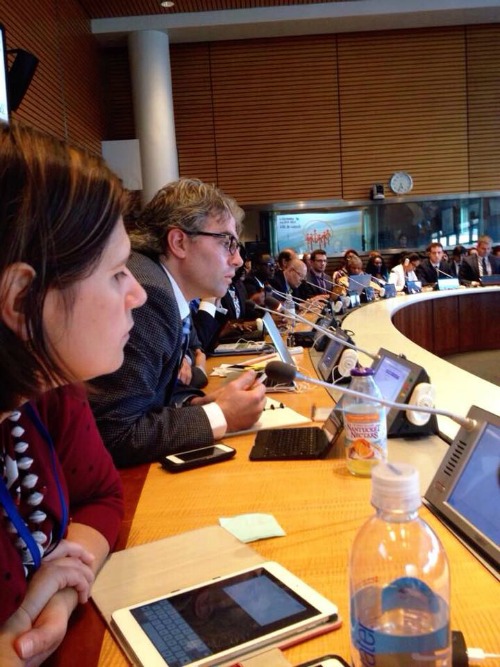
Joseph Robertson of Citizens Climate Action, questions World Bank President Dr. Kim and IMF President Mme. Lagarde on carbon pricing.
I also met the bold, Faith Nwadishi, Executive Director at the Koyenum Immalah Foundation, who had come so many miles — from Nigeria — to Washington, DC to put pressure on organizations to come together in the fight against Ebola in West Africa. Faith had no qualms about later taking the spot right next to Dr. Kim during the Town Hall. I was inspired by her energy!

Faith Nwadishi came all the way from Nigeria for the World Bank’s Civil Society Meetings in Washington, DC. Pictured here with Jennifer Burden of World Moms Blog on October 8th, 2014.
And, I could have listened to Patrick from the Congo speak for days. He’s a 28-year old masters student (his second, this one in international development). Patrick is enacting change at home through an organization he founded that educates both, women and men, on rape prevention in Congo. He sees his little sister within every woman in his home country and is dedicated to making Congo a safer place for women.
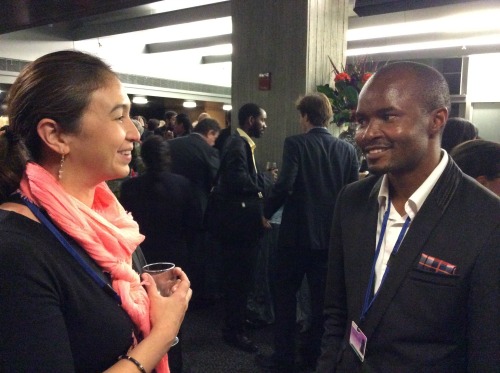
World Mom and RESULTS Board Member, Cindy Levin, talks with graduate student and change maker Patrick from Congo at the reception following the World Bank and IMF Civil Society Town Hall. October 8th, 2014.
There is no doubt the World Bank and IMF’s lending practices of the past have negatively affected civil society. And there is no doubt that the organization in the past had closed their doors to the voices of those very same people.
But, the cultural shift at the World Bank Civil Society Meetings is one that encourages change makers to join them in debate, intellectualism, passion, heated discussions and a lot of heart, which are all clearly the silver lining from the bank’s closed door past.
The current bank President, Dr. Jim Yong Kim is even a former bank protester, which is an indicator on how the tide is turning.
It is time for the world to listen to the likes of Jessica Evans, Joseph Robertson, Faith Nwadishi, Patrick and many more change makers around the world. They are the kind of people that will press and lead the World Bank toward it’s goal to end poverty. You can join them, too…what are you waiting for?
This is an original post by World Moms Blog founder, Jennifer Burden in New Jersey, USA. Jennifer and Cindy Levin of Missouri, USA were invited by the World Bank to take part in the bank’s Civil Society Meetings in Washington, DC. See additional posts by Cindy Levin about their experience on her blog, Anti-Poverty Mom:
Keeping It Civil at the World Bank
A Different View of Citizen Engagement at the World Bank
A New Course for the Big Ship of the World Bank
Photo credits to the author and Cindy Levin.

Jennifer Burden is the Founder and CEO of World Moms Network, an award winning website on global motherhood, culture, human rights and social good. World Moms Network writes from over 30 countries, has over 70 contributors and was listed by Forbes as one of the “Best 100 Websites for Women”, named a “must read” by The New York Times, and was recommended by The Times of India.
She was also invited to Uganda to view UNICEF’s family health programs with Shot@Life and was previously named a “Global Influencer Fellow” and “Social Media Fellow” by the UN Foundation. Jennifer was invited to the White House twice, including as a nominated "Changemaker" for the State of the World Women Summit. She also participated in the One Campaign’s first AYA Summit on the topic of women and girl empowerment and organized and spoke on an international panel at the World Bank in Washington, DC on the importance of a universal education for all girls. Her writing has been featured by Baby Center, Huffington Post, ONE.org, the UN Foundation’s Shot@Life, and The Gates Foundation’s “Impatient Optimists.” She is currently a candidate in Columbia University's School of International and Public Affairs in the Executive Masters of Public Affairs program, where she hopes to further her study of global policies affecting women and girls.
Jennifer can be found on Twitter @JenniferBurden.
More Posts - Website
Follow Me:


by Mirjam | Oct 13, 2014 | 2014, Childhood, Cultural Differences, Family, Life Lesson, Netherlands, Uncategorized
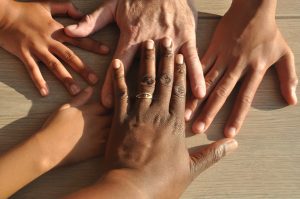 I’ve always had trouble knowing where to fit in. I have never known which box I was supposed to climb in or which label to stick on my forehead.
I’ve always had trouble knowing where to fit in. I have never known which box I was supposed to climb in or which label to stick on my forehead.
I was born in Surinam, but most of my life I have lived in the Netherlands.
My parents had a strong sense of culture and raised me accordingly.
We lived in a small town in the northern part of Holland that did not have many people of color.
Needless to say, things outside of my home were very different to things inside.
In my home there were loud voices and singing, dancing and vibrant music.
Outside of the home it felt like I needed to be ashamed of my mother’s loud voice,and I tried my best not to speak too loud.
Around my family I felt at home and liked my braids and dark skin.
Outside home, old ladies would sometimes come up to me and touch my ‘strange’ hair, and make me wish my skin wasn’t making it impossible to blend in or disappear.
There was lots of loud laughter in our home. My mother would read Anansi stories and we would laugh hysterically.
Outside of the home, I could not explain to people why any story that starts with: “Dear God, can you make everyone that laughs at someone else drop dead instantly…” is going to be a really funny one.
In Surinam culture it’s very important that children learn to respect their parents and older people. You never talk back, you never raise your voice and you always look down when you are spoken to by an adult.
At school the teacher would say: Look at me when I talk to you!
At home my parents would speak to each other and family members in Sranang tongo, their native tongue. They would speak to us in a mixture of Dutch and Surinamese, we spoke to them in Dutch. With my sisters I spoke in a mixture of Dutch and Surinamese.
At school I spoke Dutch and there were so many things I could not talk about or explain because there was no word for it in Dutch.
At birthdays, we had parties with lots of family and friends coming in from everywhere, staying for dinner and sleeping over. My mother would cook lots of food, aunts would help in the kitchen and the house was filled with all of these wonderful festive smells, and we would eat until we could eat no more.
When I was invited to a party of one of my friends, we sat in a quiet circle with mostly old family members having a polite conversation and we were given a piece of cheese with a little vlag stick (it’s a Dutch thing), everyone left before dinner and there was absolutely no music.
Growing up in these two cultures thought me how to adapt. I learned how to behave and what was expected of me in each situation. And because I was such a people pleaser, by the time I was in my teens, I could blend in anywhere and everywhere. and I knew what was expected of me. I also had lots of interest in different people.
The people I called my friends were a variety of ages, colors, cultures and mixtures and I loved every one of them.
Still, I always felt different.
I’m an adult now. I married a man whose skin color is the exact opposite of mine (no matter how much sun he gets). My children are of mixed culture. Their skin color is a mixture of ours, their hair is mixed, curly but not as curly as mine, dark but not as dark as mine.
My husband sometimes plays his (terrible) Dutch songs and I sing and dance with my children to old Surinam children’s songs. When we celebrate there’s lots of family and lots of food but no music, because my husband says he can’t have a conversation with music in the background. I teach my children to respect their parents and older people, but I also teach them that it’s okay to speak up and look people in the eye.
I mostly speak Dutch, but when emotional I turn to my native tongue, although my kids hardly understand what it is that I’m talking about.
I think here. With my own family a perfect mixture of black and white, Dutch and Surinam, east and west, I fit here.
Do you have a mixture of cultures in your family? How do you adapt?
This is an original post to World Moms Blog by Mirjam of The Netherlands.
Photo credit to the author.
Mirjam was born in warm, sunny Surinam, but raised in the cold, rainy Netherlands.
She´s the mom of three rambunctious beauties and has been married for over two decades to the love of her life.
Every day she´s challenged by combining the best and worst of two cultures at home.
She used to be an elementary school teacher but is now a stay at home Mom. In her free time she loves to pick up her photo camera.
Mirjam has had a life long battle with depression and is not afraid to talk about it.
She enjoys being a blogger, an amateur photographer, and loves being creative in many ways.
But most of all she loves live and laughter, even though sometimes she is the joke herself.
You can find Mirjam (sporadically) at her blog Apples and Roses where she blogs about her battle with depression and finding beauty in the simplest of things. You can also find Mirjam on Twitter and Instagram.
More Posts - Website
Follow Me:



by Purnima Ramakrishnan | Oct 11, 2014 | 2014, Feminism, Girl Child, Human Rights, Humanity, India, Inspirational, Maternal Health, Purnima, School, Sex, Sexuality, Social Equality, Social Good, The Advocates of Human Rights, The Alchemist, United Nations, Women's Rights, World Events, World Interviews, World Mom Feature, World Moms Blog, World Motherhood, World Tour, World Voice
In celebration of International Day of the Girl, our Senior Editor in India, Purnima Ramakrishnan, interviewed the heads of a very special school in India. What she learned and felt was nothing short of amazing…
I was ushered in, inside the Vice-Principal’s room when I expressed my desire to interview both, the VP and the Head-Mistress. It was a completely relaxed chat, and I was so surprised about the open-door policy embraced by this school for all its teachers and students. All my prepared interview questions flew out of my head as they talked about the school, the students and their passion for teaching.
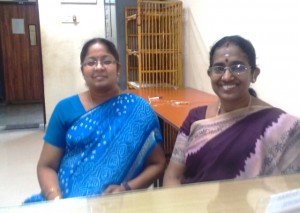
Mrs. Bhavani Baskar, The Vice-Principal (left) and Mrs. Jayashree Subramanian, Head-Mistress (right) of the PSBB Millennium School
During the chat, I observed so many students and teachers, and other staff members of the school, knocking and walking in with something or the other which needed either the Vice Principal’s or Head mistress’ intervention. No, you don’t need any appointment to go and say ‘Hello’ to them. None of the students did.
And as we proceeded to chat, I became more surprised and awed at the way they addressed students on a first name basis, from various grades who had popped in for a chat. Who could remember so many names? They did!
It has been a great pleasure to chat with Mrs. Bhavani Baskar, The Vice Principal and Mrs. Jayashree Subramanian, the head Mistress of PSBB Millennium School in Chennai, India. They spoke about their teaching journey, their vision for girls and boys in the school and the murals. It was the murals which sparked my curiosity and led me into their doorway. I included picture of them throughout the interview below, and I hope you find them as beautiful, as I did! Now on to the interview…
What inspired the murals? Who did them?
Initially, we got a palm imprint from all the girls of the school to say, “I am proud of being a girl.” The boys of the school wanted to join, too, to say, “We respect you.” This was done to celebrate the “Day of the Girl Child.”
These murals were an extension of the same theme.
The senior students were encouraged to paint the walls sharing their thoughts on being a girl, and the boys also joined, to express how they felt about their girl-classmates. The result was the lovely messages that came across on the walls.
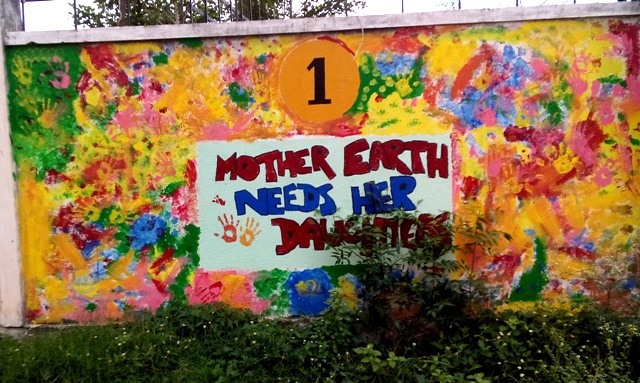
Mother Earth Needs Her Daughters
What was the effect of the murals?
They are receiving a lot of attention. The occurrences of boys teasing girls has reduced considerably. Bullying is also greatly reduced. Respect between the genders has increased. The general attitude has improved.
These murals are painted at the backdrop of the playground, and all the children at some point in time look at them at least once a day. And whether they want to or not, they have to acknowledge their presence consciously or subconsciously. Children right from grade 1 to 12 share the playground and so they would look at them. They would talk about them. And it would create an impact as to how girls are viewed.
The murals affect the thought process of both the boys and girls as they grow up. Boys would respect girls and girls would grow up to be secure, and confident in this society.
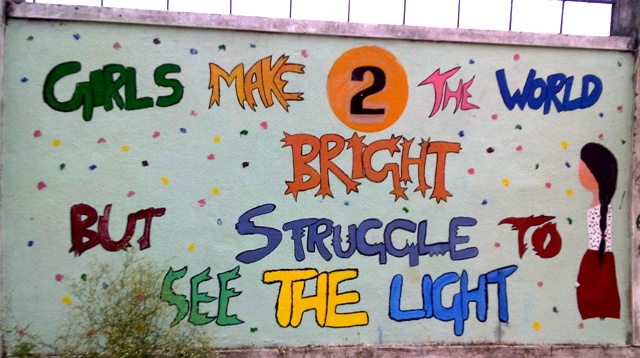
Girls Make The World Bright, But Struggle To See The Light
What is the % of boys and girls in the school?
Boys beat girls by being 54% and girls are 46%. But this is still a great ratio for the state where female infanticide is rampant in the rural areas.
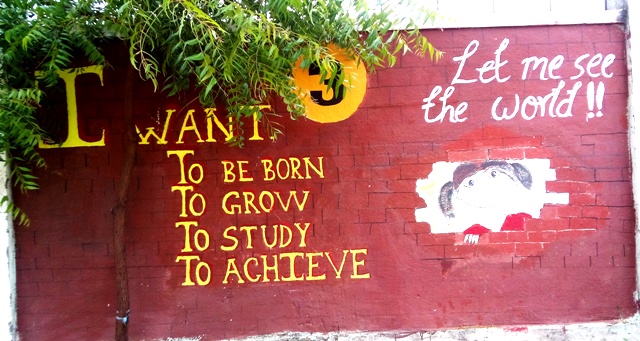
Let Me See The World
Can you comment about the performance of the girls and boys in the school?
Girls always out-beat boys! They are more sincere, they are meticulous in their planning and definitely more hardworking.
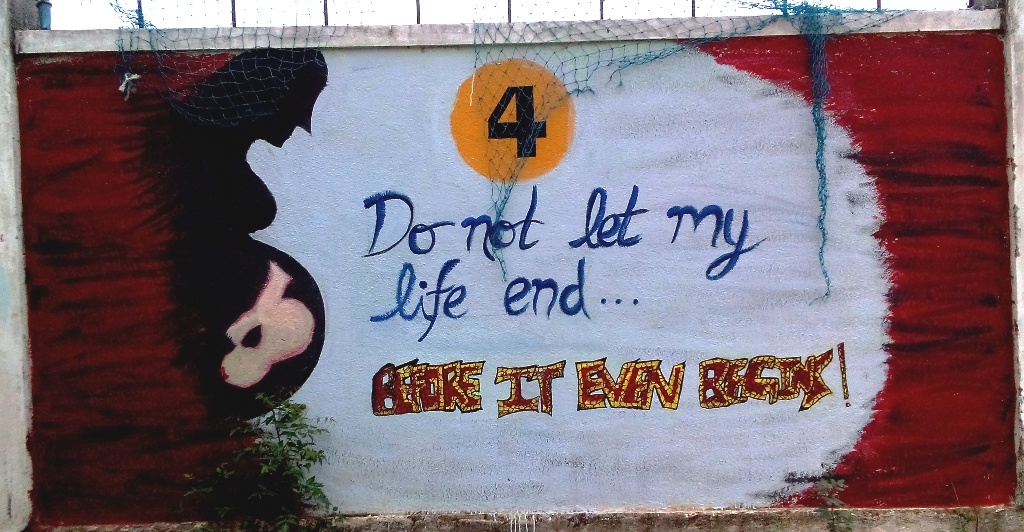
Do Not Let My Life End
They also spoke about their respective personal teaching career and their journey in the school. Mrs. Bhavani Baskar, the Vice Principal joined as a Mathematics teacher and now in addition to her duties as a Vice Principal, she continues teaching Mathematics for Grade 12. She is also the HOD for the Math department. She has more than 20 years of teaching experience in mathematics, and she is passionate about it.
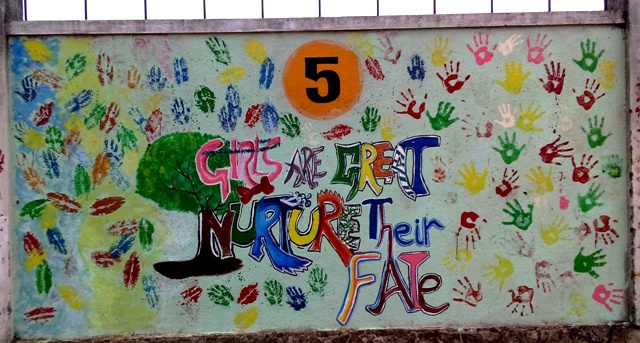
Girls Are Great, Nurture Their Fate
Mrs. Jayashree Subramanian, the Head Mistress is also the HOD of the Social Science department. She also manages dual responsibilities and says she would never trade the joy she finds in teaching for anything. When I asked about her retirement, she says, she is a grandmother, too, and would love to go and spend time with her grandchild. But she feels strongly attached to the school, the children, and even to the principal.
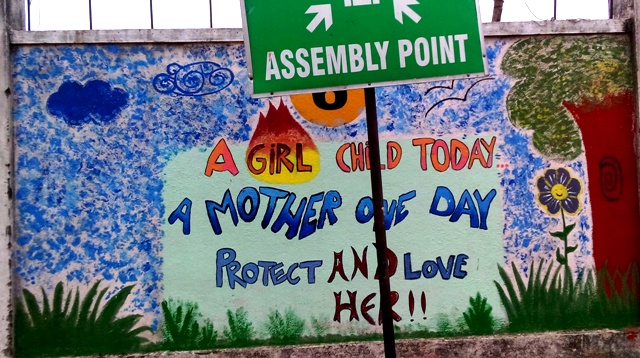
A Girl Child Today, A Mother One Day
The Principal of the PSBB Millennium School, Mrs. Sita Uma Maheswaran also had a few words for World Moms Blog in spite of her very busy schedule. The below conversation is from the Principal.
Do you feel like there is a true cultural shift taking place to recognize the importance of the girl child?
On one hand, we Indians, have so many woman deities being worshipped as God. On the other hand, we still have women and young girls being gang raped.
There is a lot of talk happening about justice and equality but it us yet to reach the rural level. Urban girls are more enthused, and they do pride in their being a woman and appreciating girls. But it is a known fact that there are certain cities where women fear to step out.
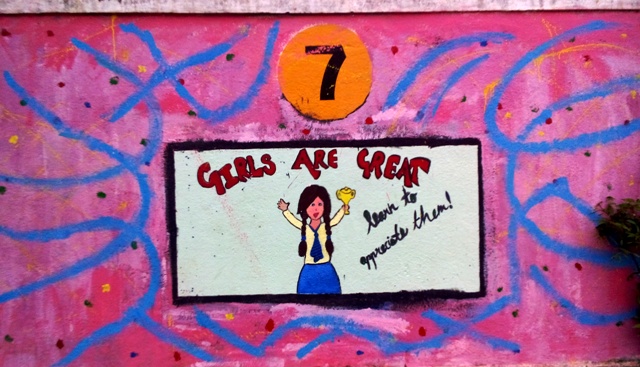
Girls Are Great, learn To Appreciate Them
What is the main factor driving this force?
Attitude among men is the main factor, irrespective of whether they are educated or not. The way they have been brought up with values in life, the way they have seen their mother or sister being treated – this can have a great effect!
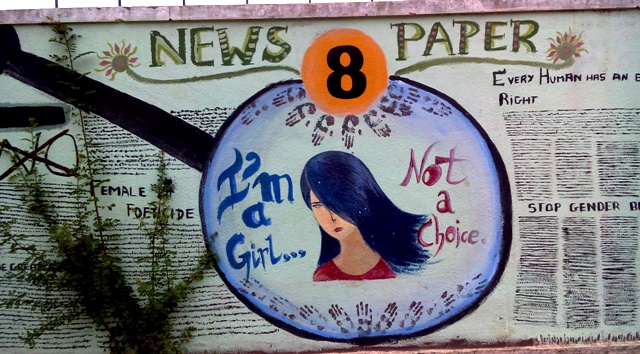
I Am A Girl, Not A Choice
How do you think these murals are affecting the thought process of girls and boys in the school?
There is respect which is breeding unknowingly for the girls, from the side of the boys. They realize that girls are to be respected and appreciated.
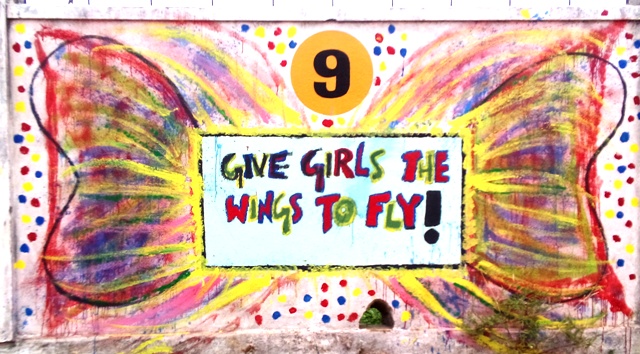
Give Girls The Wings To Fly
What was your journey like to become the principal of such a prestigious school?
I began as a Teacher Trainee in PSBB Senior Secondary School in 1986. It has been a roller coaster ride since then. There have been many a thrilling moments and a lot of learning. It is but natural when you get to work under some one like Dr Mrs Y G Parthasarathy, The Dean and Director of the school. Becoming Principal was a lot of responsibility. The work is more challenging. My perspectives have changed, too, because of the broader outlook. I work with more people now, and the goals that I set for myself are different, too.
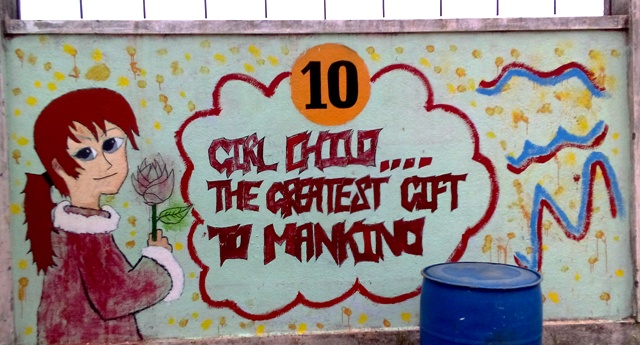
Girl Child – The Greatest Gift To Mankind
What is your one wish for girls in your school and all over the world?
Mrs. Jayashree Subramanian, the Head-Mistress said, ” I want girls in my school and all over the world to have self-respect, self-esteem and know that they are powerful. I want to teach the girls in my school to face the challenging world with confidence and courage and know that they can be whatever they aspire you to.”
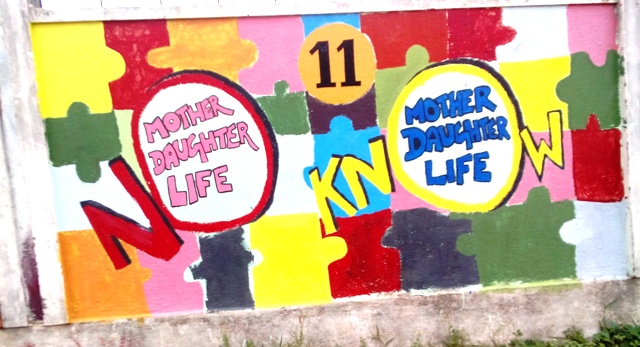
K(no)w Mother, K(no)w Daughter, K(no)w Life
Mrs. Bhavani Baskar, The Vice Principal said, “I want to teach my girls courage, valor and self-esteem. The great South Indian poet Bharathi said, “It is a great blessing to be born as a human, and even greater honor and privilege to be born as a woman.” I want my girls to realize that. I want my girls to be mothers, sisters, daughters and to be an embodiment of love for this entire race.”
There were a few other teachers too who shared their wish for girls everywhere.
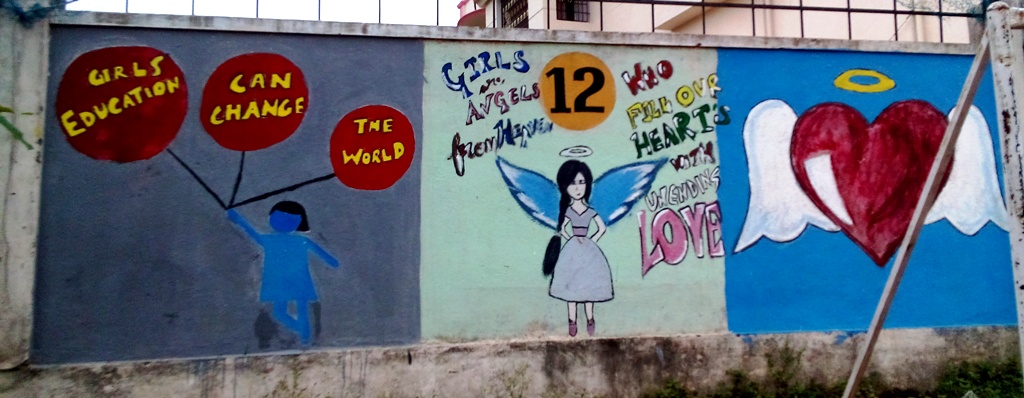
Girls Education Can Change The World

Mrs. Mukhtar Tahsin Fathima, 3 – grade teacher
Mrs. Mukhtar Tahsin Fathima, the third grade teacher said, “I want all girls to have awareness about sexual education. I want them to know and be able to protect themselves under any untoward circumstances. I want little children, both, boys and girls, to be given adequate sexual education, and the ability to take care of themselves and seek help when they need it. They should also let down their reservations, shyness and taboo and come out and speak and discuss and be aware of things.”

Mrs. Deepa Seshadri, English Teacher
Mrs. Deepa Seshadri, the English teacher said, “I want my girls to be able to wear and talk what they feel like. They should have the freedom to be natural and happy. They should not have to live in a world where any spontaneous or innocent act is misconstrued in a wrong way. My girls as well as boy students should be able to live in a world which is liberated from prejudice of gender-related actions.”

Mrs. Banu, Kindergarten Teacher
Mrs. Banu the Kindergarten teacher said, “I want equality for all my students. When gender equality is ensured, everything else follows. Education of girl-child, empowerment of women, better living conditions for girls and women and many such issues are resolved.
Girls have a say in everything happening with them. They are independent, and they get to decide what they want to do with their lives. I have brought up my daughter, instilling that she is equal or better than just about any of her counterparts. Every mother and teacher need to do the same with their children. “
The Principal of the school, Mrs. Sita Umamaheswaran said, “I want my girls to know they are no less than any boy or man. To dream big, and set goals that they can work toward. Enjoy womanhood and be in a world that respects women and safeguards them.”
The students of this school have expressed their wish for girls across the world, through these hand-painted, beautiful and striking murals.
What is your wish for the Girl-Child across the world?
This is an original post from our World Mom and Senior Editor in India, Purnima Ramakrishnan on the occasion of the “#DayOfTheGirl Child.”
Her contributions to the World Moms Blog can be found here. She also rambles at The Alchemist’s Blog.
Photo credit for the murals, to the PSBB Millennium School.

 My 6 year-old daughter had her tonsils and adenoids out over summer vacation. She had been diagnosed with sleep apnea several months earlier and since nothing else was helping, finally I reluctantly agreed to the surgery.
My 6 year-old daughter had her tonsils and adenoids out over summer vacation. She had been diagnosed with sleep apnea several months earlier and since nothing else was helping, finally I reluctantly agreed to the surgery.





























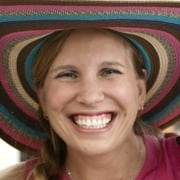
 Where in the world do you live? And, are you from there?
Where in the world do you live? And, are you from there?


